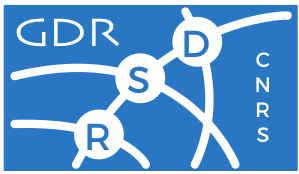Tutorial
The tutorial introduces basic concepts of resilience in SDN and NFV. For SDN, resilience typically means a master/slave configuration of controllers, where switch redundancy is achieved by means of multi-chassis link aggregation (MLAG). The problem gets more complex with multi-layered controllers. For NFV (and generally cloud services) the paradigm rules that any network function has to be disposable and recreated at any point in time, leading to a redesign of network functions that strictly splits out the state information from stateless processes running in containers. This leads to the need for storing state in highly available data bases (e.g., Cassandra) that provide the backend for slim NFVs. Here is where SDN and NFV design for resilience converge: SDN controllers need to separate out the network state information and run as frontends for network information data bases (a concept that was introduced in ONIX first and is applied in production-grade OpenSource controllers like ODL and ONOS).
Tutorial Speaker:
 |
Hagen Woesner, BISDN, Germany. |
Biography: Hagen Woesner studied Computer Science in Chemnitz and Berlin and received Diploma and PhD from TU Berlin in 1995 and 2003, respectvely. Research topics started from Medium Access for WLAN to optical packet switching backplanes for Gbit/s wireless networks. From 2003 to 2006 he spent a postdoc period at Create-Net, Italy, working on Light-trails and impairment-based routing in GMPLS. 2007 he returned to Berlin to work as project manager at EICT GmbH, from 2010 to 2013 he coordinated the OFELIA FP7 project that constructed a pan-European OpenFlow testbed. He initiated the European Workshop on SDN in 2012, which will have its fifth edition this year. In 2012 he founded BISDN GmbH together with 5 friends, a company working mainly on hardware accelerated SDN/NFV in Berlin. Currently he is CEO of BISDN and participates in EU projects UNIFY and 5GEx.






